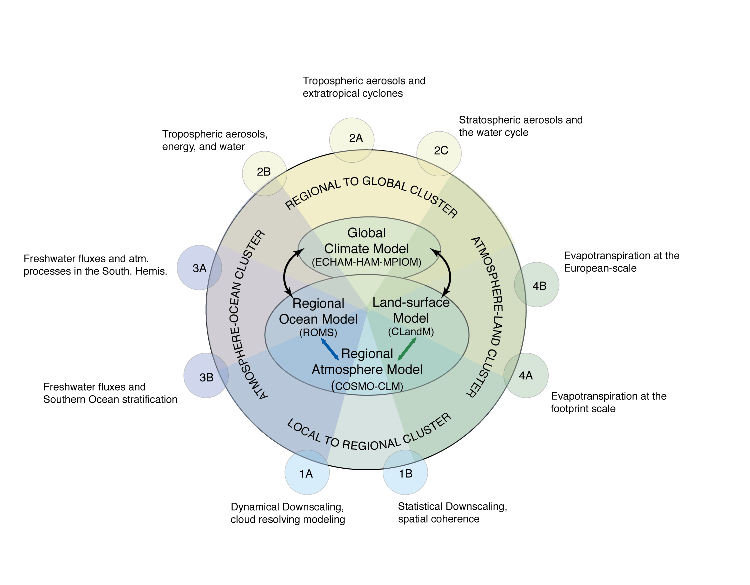Modeling the water cycle in a changing climate (CHIRP2)
A CHIRP2 final project meeting will be held on November 10 from 13:30 onwards (ETH, room HG F 33.5) followed by an apero. CHIRP2 final meeting. DownloadCHIRP2 final meeting program (PDF, 499 KB)vertical_align_bottom.
The Center for Climate Systems Modeling (C2SM) will play a critical role in enabling and supporting this network of collaborative, interdisciplinary projects. The main tools are a set of models hosted by C2SM: COSMO-CLM (atmosphere), CLandM (land surface), and ROMS (ocean) at the regional scale, and ECHAM (atmosphere and ocean) at the global scale.
Observations from in-situ networks and remote sensing instruments will provide additional crucial sources of information and constraints for the models. The main outcomes of this project will be improved understanding, better constrained model parameters, and new numerical representations of critical processes, which will permit us to provide substantially improved projections of how the water cycle works in a changing climate. This will lead to large benefits to society, in particular by aiding the development of improved adaptation in fields ranging from agriculture to hydropower.
Research Clusters
The project centers on four sets of interactions identified as particularly limiting scientific progress. These form the basis for four research clusters:
- local to regional processes governing clouds and rainfall over complex topography,
- regional to global processes governing the impact of changes in aerosol loads on the Earth’s energy budget and the hydrological cycle,
- atmosphere-ocean interactions determining the net transfer of freshwater and the resulting impacts on atmosphere and ocean dynamics in the Southern Ocean region, and
- atmosphere-land-surface interactions that are essential in determining the moisture and energy exchange fluxes (especially in Europe) and hence altering droughts and rainfall patterns.
People
Specific research hypotheses within each of these four clusters will be addressed by a total of 8 Ph.D. students, each to be advised by two faculty members, coming from a total of six institutes at ETH Zurich (four departments) and three partner institutions (MeteoSwiss, ART, and PMOD).
In addition, three experienced postdoctoral researchers will work with the Ph.D. students, carry out some of the particularly challenging modeling tasks, and provide further expertise and integration across the four clusters.

